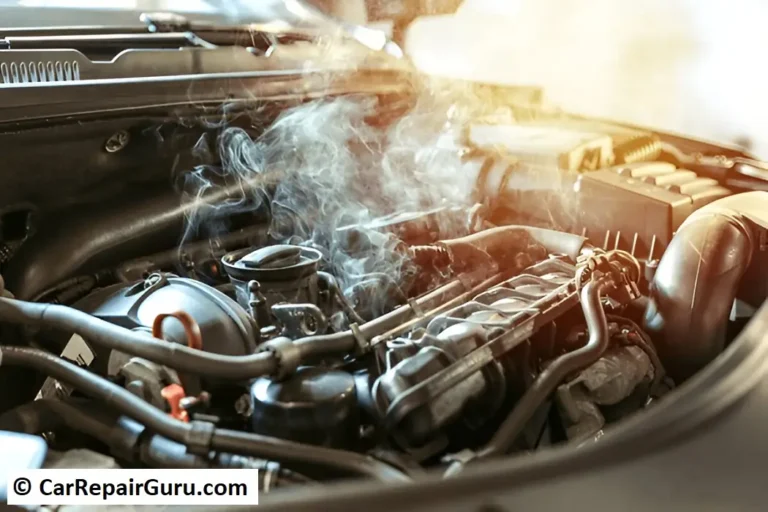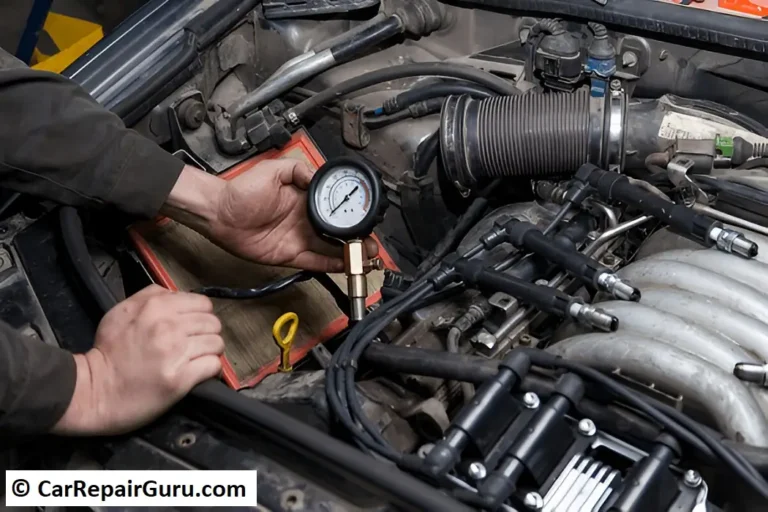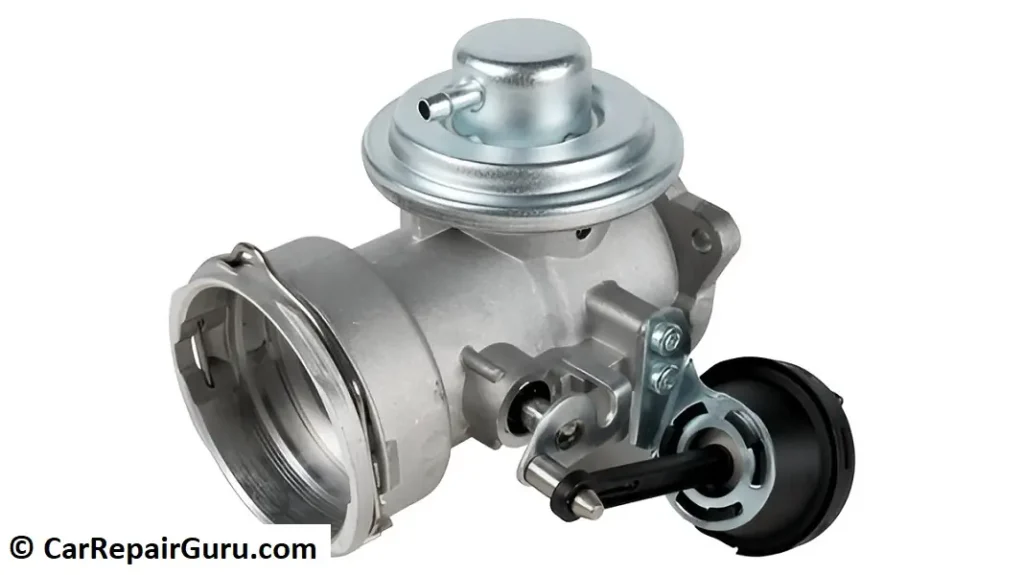
Have you ever wondered what keeps your car’s engine running efficiently while reducing harmful emissions? Enter the Exhaust Gas Recirculation (EGR) valve—a small yet mighty component responsible for a big job.
The EGR valve plays a crucial role in managing your engine’s emissions by recirculating a portion of the exhaust gases back into the combustion chamber. This process reduces nitrogen oxide (NOx) levels, which are harmful pollutants that contribute to smog and poor air quality.
But the EGR valve isn’t just about being eco-friendly. It also helps improve fuel efficiency and ensures your engine operates smoothly. However, like any other part of a vehicle, it can develop issues over time, leading to noticeable changes in engine performance. Understanding how the EGR valve works and what can go wrong with it is the first step toward maintaining your car’s health.
In this guide, we’ll dive into everything you need to know about EGR valve issues—from recognizing the symptoms to troubleshooting and finding practical solutions. Whether you’re a car enthusiast or just someone who wants to save on repair costs, this article has got you covered.
Common Symptoms of EGR Valve Issues
Recognizing the symptoms of EGR valve issues early can save you from costly repairs and keep your engine running smoothly. Here are the most common signs that your EGR valve may be acting up:
1. Poor Engine Performance
A faulty EGR valve can disrupt the air-fuel mixture, leading to reduced engine power, sluggish acceleration, and rough idling. If you notice your car struggling to respond or a lack of smoothness in its performance, the EGR valve might be the culprit.
2. Increased Fuel Consumption
When the EGR valve is stuck open, excess exhaust gases are recirculated into the combustion chamber. This can lead to incomplete combustion, forcing your engine to burn more fuel to compensate. A noticeable drop in fuel efficiency often points to an EGR valve issue.
3. Check Engine Light Activation
Modern vehicles use sensors to monitor the EGR system. If an issue arises, such as a stuck or clogged valve, the car’s computer will detect it and trigger the check engine light. While this warning can signal other problems, pairing it with performance issues increases the likelihood of an EGR-related problem.
4. Engine Knocking Sounds
Elevated combustion temperatures caused by a malfunctioning EGR valve can result in pinging or knocking noises from the engine. These sounds indicate pre-detonation, which can lead to engine damage if not addressed promptly.
5. Failed Emissions Test
The EGR valve plays a vital role in controlling nitrogen oxide (NOx) emissions. When it malfunctions, NOx levels can exceed permissible limits, leading to emissions test failures and potential fines in regulated areas.
Being aware of these symptoms can help you act quickly and maintain both your vehicle’s performance and compliance with environmental standards.
Causes of EGR Valve Failure
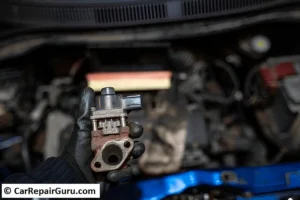
EGR valve failures are not uncommon, and understanding the causes can help you prevent potential problems and maintain your engine’s efficiency. Below are the primary reasons why EGR valves fail:
1. Carbon Build-Up
One of the most frequent causes of EGR valve failure is the accumulation of carbon deposits. Over time, soot, unburnt fuel particles, and other residues build up on the valve and its passages. This restricts the movement of the valve, causing it to stick open or closed. When the valve is stuck, it disrupts the recirculation of exhaust gases, leading to engine performance issues, increased emissions, and fuel inefficiency.
2. Faulty Components
The EGR valve doesn’t operate in isolation—it relies on components such as solenoids, vacuum hoses, and electrical connections. If any of these supporting parts fail, the valve might not function correctly. For instance:
- A malfunctioning solenoid can prevent the valve from opening or closing as needed.
- Damaged or leaking vacuum hoses can interrupt the vacuum signal required for valve operation.
- Faulty electrical wiring or connections may disrupt communication between the vehicle’s computer and the EGR valve.
These issues often require targeted repairs or component replacements to restore normal function.
3. Extreme Operating Conditions
EGR valves are exposed to high temperatures and intense operating conditions, especially in vehicles that frequently carry heavy loads or are used for towing. These extreme conditions accelerate wear and tear on the valve and its components. Over time, the excessive heat and pressure can cause mechanical failure or exacerbate carbon build-up, leading to reduced reliability and performance.
By addressing these root causes proactively through regular maintenance, you can extend the lifespan of your EGR valve and keep your engine running smoothly.
Potential Risks of Driving with a Faulty EGR Valve
Driving with a faulty EGR valve may seem manageable at first, but it can lead to serious problems for both your engine and the environment. Here are the main risks:
1. Engine Overheating
The EGR valve helps regulate combustion temperatures by recirculating exhaust gases. When it fails, combustion temperatures can rise significantly. This overheating puts additional stress on the engine, potentially causing damage to critical components such as the cylinder head, gaskets, and pistons. Prolonged overheating can lead to expensive repairs or even total engine failure.
2. Increased Emissions
A malfunctioning EGR valve disrupts the balance of exhaust gas recirculation, leading to higher levels of nitrogen oxide (NOx) emissions. These pollutants contribute to smog, respiratory problems, and environmental degradation. For vehicles subject to emissions testing, a faulty EGR valve can result in test failure, fines, or restrictions on road use.
3. Engine Knock
Without proper EGR operation, combustion temperatures can become excessively high, causing detonation or “knocking.” This occurs when fuel ignites prematurely in the engine’s cylinders, creating abnormal pressure and vibrations. Engine knock is not only a sign of inefficiency but can also cause long-term damage to the engine if left unresolved.
Addressing EGR valve issues promptly is essential to avoid these risks, protect your engine, and stay compliant with emissions regulations.
Diagnosing and Troubleshooting EGR Valve Problems
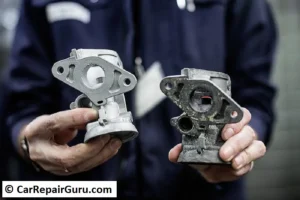
Identifying and resolving EGR valve problems early can save you time and money. Below are the key steps to diagnose and troubleshoot issues effectively:
1. Visual Inspection
Start with a thorough visual examination of the EGR valve and its surrounding components. Look for:
- Carbon Deposits: Excessive soot buildup can obstruct the valve’s movement, causing it to stick open or closed.
- Physical Damage: Cracks, corrosion, or wear on the valve or its components may indicate the need for a replacement.
Inspect vacuum hoses and electrical connections for leaks or disconnections, as these can also disrupt EGR system operation.
2. Functional Testing
Perform functional tests to ensure the valve operates correctly. Depending on the type of EGR valve, you may:
- Use a vacuum pump to test a vacuum-operated valve.
- Check for movement and proper sealing in electronic EGR valves.
If the valve doesn’t respond as expected, cleaning or replacement may be necessary.
3. Electronic Diagnostics
Modern vehicles often have onboard diagnostics (OBD) systems that monitor the EGR valve. Use a diagnostic scanner to retrieve error codes, such as P0401 (insufficient EGR flow) or P0402 (excessive EGR flow). These codes provide insight into the specific issue affecting the system.
By combining visual inspection, functional testing, and electronic diagnostics, you can pinpoint the root cause of EGR valve problems and take appropriate corrective measures. Regular maintenance and early intervention can prevent more severe issues down the road.
Solutions and Maintenance Tips for EGR Valve Issues
Addressing EGR valve problems promptly and following a maintenance routine can significantly enhance your engine’s performance and longevity. Here’s how you can tackle EGR valve issues and keep them at bay:
1. Cleaning the EGR Valve
Carbon build-up is a common cause of EGR valve malfunction. Cleaning the valve can restore its functionality. Follow these steps:
- Step 1: Disconnect the battery and remove the EGR valve carefully to avoid damage.
- Step 2: Use a carburetor cleaner or specialized EGR valve cleaner to dissolve carbon deposits.
- Step 3: Gently scrub the valve and its passages with a soft brush, ensuring no debris falls into the engine.
- Step 4: Reinstall the valve and reconnect the battery. Test its performance to confirm proper operation.
2. Replacing Faulty Components
If cleaning doesn’t resolve the issue, check for defective components like solenoids, vacuum hoses, or the valve itself. Use a diagnostic tool to identify the problem and replace damaged parts with manufacturer-recommended replacements to ensure compatibility and reliability.
3. Preventive Measures
- Regular Maintenance: Schedule routine inspections of the EGR system during oil changes or engine tune-ups.
- Use Quality Fuel: High-quality fuel reduces carbon deposits, extending the life of the EGR valve.
- Engine Warm-Ups: Allowing the engine to reach optimal temperature helps burn off deposits and prevent build-up.
By cleaning, replacing faulty components, and maintaining your EGR valve, you can avoid costly repairs and ensure a smoother driving experience.
Conclusion
A properly functioning EGR valve is essential for maintaining engine performance, improving fuel efficiency, and reducing harmful emissions. Neglecting issues with this critical component can lead to engine damage, increased pollution, and costly repairs.
By understanding the symptoms, causes, and solutions for EGR valve problems, you can take proactive steps to keep your vehicle running smoothly. Regular maintenance, timely cleaning, and replacing faulty parts when needed are key to preventing future issues. Addressing EGR valve problems promptly not only ensures a healthier engine but also contributes to a cleaner environment and a safer driving experience.
FAQ About EGR Valves
What is an EGR valve and its function?
The EGR valve recirculates exhaust gases into the combustion chamber to lower nitrogen oxide (NOx) emissions, improve fuel efficiency, and regulate combustion temperatures.
What are the symptoms of a failing EGR valve?
Common signs include poor engine performance, increased fuel consumption, check engine light activation, engine knocking, and failed emissions tests.
Can I drive with a faulty EGR valve?
Driving with a faulty EGR valve risks overheating, increased emissions, and engine damage. Addressing the issue promptly prevents costly repairs.
How often should the EGR valve be cleaned or replaced?
Clean the EGR valve every 30,000–50,000 miles and replace it around 70,000–100,000 miles to maintain performance.
Is EGR valve replacement a DIY task?
While possible for experienced DIYers, EGR valve replacement is best handled by a professional to avoid further complications.
